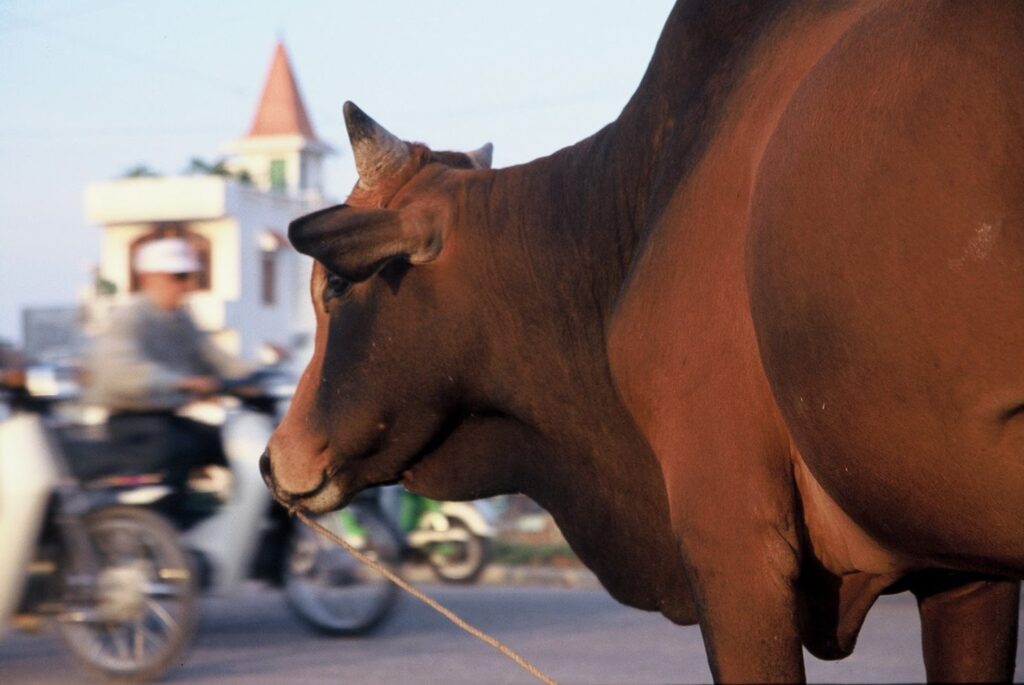In 2008 the world’s urban population exceeded the rural population for the first time in the history. This urbanization process is happening together with growing urban poverty and food insecurity and this trend is set to continue.
Urban food security in East-Africa requires a reliable year round supply of nutritious and safe food. Urban consumers generally rely on purchased foods, mainly from rural areas or imported into the country. Many urban poor have long practiced urban and peri-urban agriculture as a livelihood and survival strategy. Animal farming in urban and peri-urban areas is a way of meeting a higher demand for food. There are, however, several constraints that come with urban and peri-urban animal farming such as, diseases that can affect humans and animals, lack of feed or feeding human food to animals and animal waste.
To address the issue of starvation and malnutrition, the Swedish University of Agricultural Sciences and partners in Africa and elsewhere have dedicated funding for food security related research projects. This resulted in several studies that were presented at the SLU Global Food Security Symposium in June 2013.
Presence of Brucella infections
Keeping livestock in urban and peri-urban areas is a risk which could have a negative impact on public health. The bacterial disease brucellosis is one such disease. It causes abortions and reduced milk production in animals and infects humans through unpasteurized milk products. A joint research project between SLU and Makerere University investigated Brucella infections among cattle in urban and peri-urban areas in Uganda. A comparison between two regions of Uganda, Gulu and Soroti was carried out. The milk production in Gulu is performed through intensive farming, using cattle mixed with European breeds, whereas the milk production in Soroti is with extensive herds farming with more cows of native breed origin. Furthermore, gender roles differ between the regions. In Gulu, it is mostly women who run milk production and in Soroti it is run by men. Brucellosis appeared to be more common in Soroti (33%) compared to Gulu (11%). The study survey showed that the majority of respondents have not heard about brucellosis before. It is interesting that despite low awareness substantial proportion of milk was delivered to boiling points. However, at the same time, 29% of respondents in both regions reported fresh milk consumption.
Feed strategies for livestock
Production of feed for livestock in urban and peri-urban areas is usually a limiting factor to livestock production and its purchase is often prohibitively expensive. In order to investigate the available feed resources for livestock in urban and peri-urban areas of Kampala a collaborative study, Feed for livestock in urban and peri-urban areas in Uganda, was carried out between SLU and Makerere University. The study showed that farmers have adopted several strategies to cope with feed scarcity, but these were often short-term, dealing with the problem on a day-to-day basis. Furthermore, they found that farmers use locally devised criteria to judge the nutritional quality of feed resources and they put more importance on availability and cost when choosing feed resource.
Converting manure and waste into animal protein
Efficient sanitation and waste management systems are seldom thoughtfully established in cities in low-income countries and the infrastructure to handle excreta and manure is often poor. In Kampala, Uganda, a large proportion of liquid waste is dumped into the water courses. Researchers from SLU in collaboration with researchers from Makerere University carried out a study called Animal protein production from waste and manure. The study seeks to find better ways of excreta and manure management methods and to make products with higher economic value utilizing waste. Manure was recycled into proteins which may be used as feed in animal production. The conversion was made by either worm or black soldier fly composting. This treatment is also a way of reducing the risk of salmonella. After complete vermicomposting, followed by composting with worms, 500kg of cattle manure was converted to 50kg of animal feed and 100kg compost.
The black soldier fly treatment is different. Maggots were added to degrade the material. Treatment with flies capable of reducing waste by 60-75%. Flies are also less dependent on climate than worms. The BSF system treatment has daily output capacity of 100g of animal feed (prepupae) from 1 kg of manure. Studies show that theoretically, in a 5-month season a 100,000 bird caged layer house could produce 53 t of prepupae suitable for feed. However, it is not advised to use chicken manure as larvae feed because salmonella is not treated effectively in this case. Using of excreta or cow or pig manure suits better because they do not share many pathogens with chicken. Alternatively, the larvae can be sanitised, by drying, in which case the risk is considerably lowered. In general, application of such treatment simultaneously reduces amount of waste and feed purchase expenses as well as decreases risk of pathogens and provides short-cut in nutrient recycling.
Summary
The research projects revealed the importance of new strategies and innovations in order to secure food and nutrition for growing urban and peri-urban population. A major problem for animal farming in these areas is the absence of feed and the research showed that lack of long-term strategies makes feed supply insecure. Also the conversion of manure into animal feed demonstrated a new way of thinking. However, the acceptance of this method among farmers as well as possibility of scaling is debatable.
